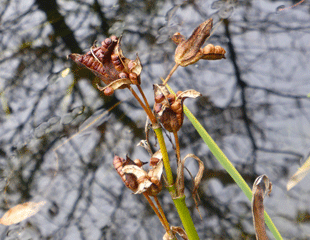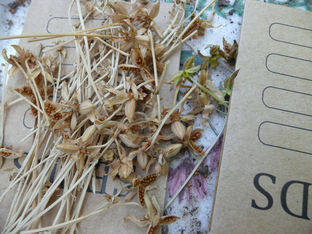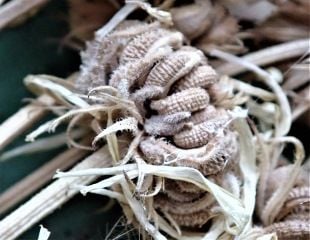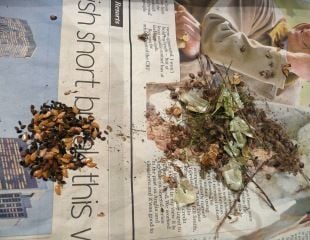How To Save Seed
Early autumn is the best time for saving seed. Many plants, especially annuals, start shedding their seed quite early in the year from around August and the seed is evident on plants throughout autumn. The basic method of saving seed is to look for a ripe seed pod (see images) and cut it from the plant bringing inside in the warm to dry.
Some seeds have specific germination requirements, but there are many seeds which are easy to save and germinate saving the cost of seed the following year. This is particularly so if you are successively sowing, such as Rocket, even though seed is relatively cheap to buy, several packets still add up. Helpfully Rocket is one of the easiest seeds to save.
At the end of the season leave a few stems of peas and beans for the pods to form and dry out. In the case of rocket let it flower so the seeds pods form as the flowers fade.
If the weather is wet or frost threatens, cut down the stem and bring indoors to dry. It is most important that seed is dry when stored as damp seed will quickly go mouldy and be unusable. That said I did leave a bunch of rocket I had picked in the greenhouse over winter, and shaking out the seed in the spring it was good to use. Once dry the seed can be stored but it is best to sort the chaff out and store just the clean seed. This means removing the seed pod/husk and taking out just the seed, often tweezers are needed for very small seeds to scrape them out of the seed pods.
Gathering and saving Tomatoes seeds is different. To save tomato seed you need to pick a ripe fruit, scoop out pulp with the seeds and place in jar of water. Swill it around for couple of day and the seed will separate from the pulp and then you can fish the seed out and dry for storage. Many tomatoes plants sold are F1 hybrids and these are not suitable for seed saving. Neither are plants which cross pollinate such as courgettes, squashes and cucumbers.
Seeds which are easy to save and germinate
Rocket is great the seed pods which form after flowering are full of tiny rocket seeds. Other easy seeds to save are Tomatoes, all of the Pea and Bean family, many annuals such as Cornflowers, Nasturtium, Poppy Seeds, Morning Glory, Marigold, Calendula, Nigella, and Sweet Peas.
How to Clean and Store Seed
Cleaning seed is a perfect job for a winter afternoon. It's not a job to be hurried, and for the smaller seeds, tweezers are the only way to separate seed from chaff and dirt.
These seeds pods in the images below have been drying out in a warm, airy place for weeks until I finally got round to sorting them out. It is important the seed is really dry before you store it. The seeds in the image left, Nigella seeds are dark brown almost black but when the seed was ripe it was green. As it dries, it has darkened and you can feel that the seed is hard and dry.
Each seed pod needs to be opened and then the seeds removed, which is easy if it is broad beans or peas which are large seeds which come away in your hand. Smaller seeds, such as Nigella and Rocket are tiny and tweezers are really good for scraping out the pod into a seed packet. In the image on the right the assorted wild flower seeds are on the left side of the image and the husks and seed pods on the right. I keep it in the fridge over winter as the ideal environment is cool and dark.
Unless you have a lot of time and plants, saving seed isn't going to replace buying seed in the spring and it's not ideal for all plants, but it is interesting to grow from saved seeds and it saves some money.
|








Add a comment: